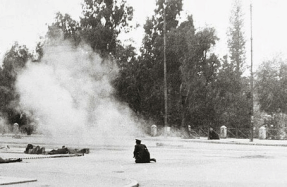THE CHRISTMAS COUNTER-ATTACK

By 23 December, the eighth day of the Battle of the Bulge, the Germans’ territorial gains (the eponymous ‘bulge’) was around 45 miles wide and 60 miles across, with its most westerly line around four miles from its key objective, the River Meuse. But the advance was stalling. Already way behind schedule, German armoured units were running out of fuel and key objectives had yet to be taken from the enemy.
St Vith and Bastogne were still in American hands, and after the initial element of surprise was lost, resistance was intense. The battle was reaching its critical period. Both Model and Manteuffel now realised that taking Antwerp was impossible, so they proposed a new plan that limited their advance to the Meuse. Hitler declined, demanding a renewed push to cross the river. It was a shortsighted decision.
Not only was the attack on the ground running out of
You’re reading a preview, subscribe to read more.
Start your free 30 days





